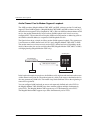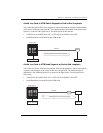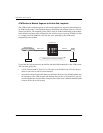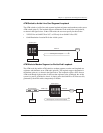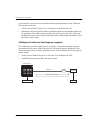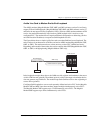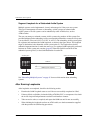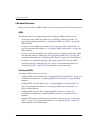
Chapter 3: Applications and Configuration Overview
Avidia System Configuration and Management User Manual 67
Avidia Line Card to Modem End-to-End Loopback
The ADSL modems (Megabit Modem 700F, 600F, and 500L software versions 2.6 and later)
support F5 flow OAM loopbacks. (Megabit Modem 700F, 600F, and 500L software version 2.7
and earlier do not support F4 flow loopback for VPCs.) Since an xDSL modem terminates ATM
service, the modem automatically loops back any OAM loopback cells it receives on any
configured PVC. The modem does not require additional configuration or addressing (such as
an OAM Location ID address) to respond to OAM loopback test cells.
The figure below shows a simple Avidia line card to modem OAM end-to-end loopback. The
end-to-end test is run between an ATM line card and an ADSL modem (Megabit Modem 700F,
600F, or 500L). The modem must have at least one user session (PVC) defined and active.
Depending on the model of the modem, the session could be either PPP (Megabit Modem 700F,
600F, or 500L) or bridging/routing (Megabit Modem 700F only).
In the loopback example shown above, the OAM test cells originate and terminate at the source
Avidia ATM line card (point B). The modem (point A), which is the target or destination device,
does not generate any OAM cells. The modem loops back OAM test cells to the originating or
source device (point B).
Configure OAM loopbacks to run on each separately defined and active PVC for the Megabit
Modem 700F and 600F since these modems support multiple simultaneously active PVCs.
The Megabit Modem 700F supports up to 32 simultaneously active PVCs. The Megabit
Modem 600F supports up to three simultaneously active PVCs.
Point B - line card
ADSL Loop
OAM End-to-End Loopback
Avidia System
Megabit Modem
MEGABITMODEM
Point A






